Ingredients
| Clean warm washing up water | A bottle, milk bottles are ideal |
Instructions
This experiment is very easy, just fill up the bottle with warm soapy washing up water, then empty it quickly.
It should fill with large bubbles. Put the bottle down near a window - This works particularly well on an overcast day.
Watch what happens to the bubbles over a few minutes.
Result
To start with the bubbles will look very boring, but within a few tens of seconds beautiful colours should develop. Over time these will get stronger and then fade out until the film is virtually invisible.
| |
| Bubble interference |
Explanation
Light is a wave, and different colours have different wavelengths. When these waves meet the thin bubble film some light is reflected from both the top and bottom surfaces. When these are a long way apart like at the beginning not a lot interesting happens, but when they are so thin they are only a few wavelengths of light interesting things start to happen.
If we think about just one colour (wavelength of light), the light reflecting off the front surface will travel slightly less far than the light from the back. This means that at some angles the peaks of both waves will line up and the waves will add together forming a bright reflection. At other angles the peaks and the troughs will line up canceling each other out, so there is no light. This is called interference.
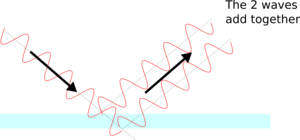 | 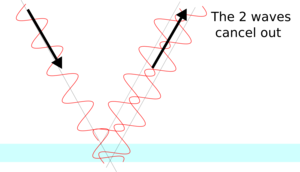 |
| At some angles the two reflected waves are in phase, adding together producing a bright reflection. | At other angles the waves are canceling each other out producing no reflection. |
So with one colour of light there would only be reflections in certain directions, but white light has many different colours - wavelengths of light. The different wavelengths mean that different colours constructively and destructively interfere at different angles. So you see different colours in different directions.
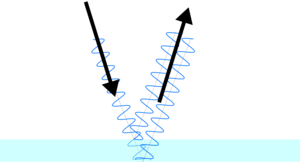 | 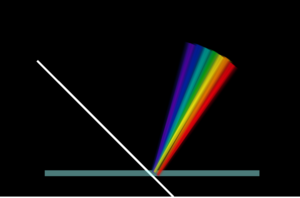 |
| A a different wavelength will produce constructive interference at different directions | Different wavelengths have a single wavelength difference in different directions. |
However you don't just get constructive interference with a path difference of 1 wavelength, but 2,3,4 etc. So there are lots of overlapping patterns.
As the film gets thicker, these patterns get smaller and closer together, until eventually with a very thick film they all overlap, and you can no longer see any colours.
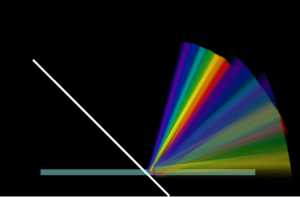 | 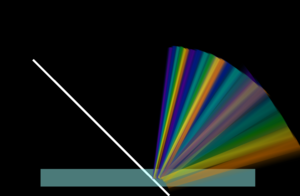 |
| There is also constructive interference with a path difference of 2, 3, 4 etc wavelengths so you get lots of overlapping patterns. | The thicker the film gets the closer together these patterns get. |
As time passes water drains out of the film and it gets thinner and thinner changing the colours you can see until eventually it is so thin they are less than a wavelength of light apart (only a few hundred nanometers thick) and almost nothing reflects, and the film goes invisible.










Comments
Add a comment